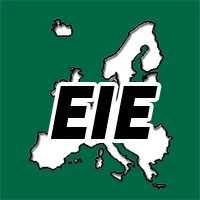The term “E-learning” has dominated the educational technology landscape for decades. But as technology itself continues to evolve rapidly, the term no longer accurately reflects the sophisticated ways in which learning is being enhanced. We’re witnessing a shift towards technology-enabled learning, a concept that emphasizes the dynamic interplay between pedagogy and ever-more-powerful technological tools.
Here’s why “e-learning” is becoming obsolete:
- Limited Scope: “E-learning” simply refers to learning that happens electronically. It doesn’t distinguish between a basic online lecture and a fully immersive virtual reality simulation.
- Tech-Neutral: The term “e” doesn’t tell us anything about the specific technologies used. A mobile learning app and a complex learning management system (LMS) are both “e-learning,” even though they offer vastly different learning experiences.

Tech-Enabled Learning: A Broader Vision
Technology-enabled learning, on the other hand, places the focus firmly on the technological tools that empower the learning process. It encompasses a vast array of tools and techniques, including:
- Interactive Learning Management Systems (LMS)
These platforms go beyond simply delivering content. They offer features like adaptive learning paths, personalized feedback, and collaborative tools that foster student engagement. - Adaptive Learning Technologies
These AI-powered systems tailor the learning experience to each student’s individual strengths and weaknesses, adjusting difficulty and pacing accordingly. - Virtual Reality (VR) and Augmented Reality (AR)
VR allows students to step into immersive simulations, while AR overlays digital information on the real world. Both technologies can create powerful learning experiences that bring abstract concepts to life. - Gamification
By incorporating game mechanics like points, badges, and leaderboards, gamified learning platforms can boost student motivation and engagement. - Learning Analytics
Data collected through technology can provide valuable insights into student progress, allowing educators to identify areas where students might need additional support.
The Technical Implementation
The technical backbone of technology-enabled learning can be complex, but it can be broken down into key components:
- Content Delivery Networks (CDNs)
These ensure smooth and reliable delivery of learning materials, especially video and interactive elements, to geographically dispersed learners. - Cloud-Based Platforms
Cloud computing allows for scalable and accessible learning environments, eliminating the need for local software installations.
Comment: This is the tool we use in our training courses. In numerous instances, we implement a MOODLE Learning Platform. - Learning Experience Platforms (LXPs)
LXPs curate and aggregate learning content from various sources, offering a personalized learning experience for each student.
The Future of Learning
 Technology-enabled learning represents a dynamic and future-proof approach to education. As technology continues to advance, we can expect even more powerful tools to emerge, transforming the learning experience into something even more engaging, effective, and personalized.
Technology-enabled learning represents a dynamic and future-proof approach to education. As technology continues to advance, we can expect even more powerful tools to emerge, transforming the learning experience into something even more engaging, effective, and personalized.

